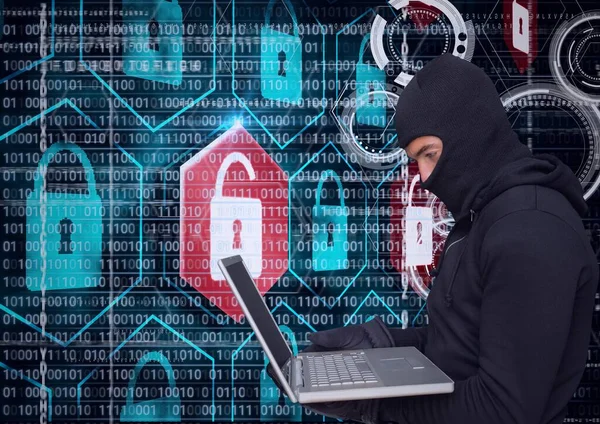Unmasking The Art Of Phishing Prevention: Your Ultimate Guide To Online Security
In an era dominated by digital connectivity, the threat landscape for online security has evolved dramatically. Among the multitude of cyber threats, phishing stands out as a pervasive and constantly evolving danger. As technology advances, so do the tactics employed by cybercriminals. Unmasking the art of phishing prevention is crucial for individuals and organizations alike. This comprehensive guide explores the nuances of phishing attacks, delves into effective prevention strategies, and empowers you with the knowledge to safeguard your online presence.
Understanding Phishing: The Deceptive Art
Anatomy of a Phishing Attack
Phishing is a form of cybercrime where malicious actors attempt to deceive individuals into divulging sensitive information, such as login credentials or financial details. Understanding the anatomy of a phishing attack is vital for recognizing and mitigating the risks. Common techniques include email phishing, spear phishing, and smishing (phishing via SMS). By mimicking trusted entities or using urgent language, attackers create a sense of urgency, tricking victims into taking actions that compromise their security.
Evolving Tactics: Beyond Traditional Phishing
As technology advances, so do the tactics employed by cybercriminals. Traditional phishing emails with generic content have given way to sophisticated attacks that employ social engineering, AI-generated content, and even deepfake technology. Recognizing these evolving tactics is essential for staying ahead of the curve in the ongoing battle against phishing threats.

The Human Element: Training and Awareness
Importance of User Education
Given that many phishing attempts rely on human error, education becomes a potent weapon against such attacks. Organizations and individuals must prioritize user education to raise awareness about the tactics employed by cybercriminals. Regular training sessions can empower individuals to recognize phishing attempts, fostering a culture of vigilance in the digital realm.
Simulated Phishing Exercises
Simulated phishing exercises provide a hands-on approach to training individuals to identify and respond to phishing attempts. By replicating real-world scenarios, these exercises allow users to experience the tactics employed by attackers in a controlled environment. Analyzing the outcomes of such exercises enables organizations to tailor their training programs to address specific vulnerabilities.
Technological Defenses: Tools and Strategies
Email Filtering and Authentication
Email remains a primary vector for phishing attacks. Implementing robust email filtering solutions helps weed out malicious emails before they reach users' inboxes. Additionally, adopting email authentication protocols like DMARC (Domain-based Message Authentication, Reporting, and Conformance) enhances the verification of email sources, reducing the likelihood of successful phishing attempts.

Multi-Factor Authentication (MFA)
Multi-Factor Authentication adds an extra layer of security by requiring users to provide multiple forms of identification before granting access. Implementing MFA significantly reduces the impact of compromised credentials, as even if passwords are exposed, the additional authentication steps serve as a formidable barrier against unauthorized access.
Web Filtering and Safe Browsing Practices
Web filtering tools and safe browsing practices help mitigate the risk of phishing attacks initiated through malicious websites. These tools block access to known phishing sites, preventing users from inadvertently exposing sensitive information. Educating users on safe browsing habits, such as checking for secure connections (HTTPS) and avoiding clicking on suspicious links, is equally essential.
Cyber Hygiene: Best Practices for Individuals and Organizations
- Strong Passwords: Create complex passwords combining letters, numbers, and symbols, and avoid using easily guessable information like birthdays. Regularly update passwords to enhance security.
- Multi-Factor Authentication (MFA): Enable MFA whenever possible to add an extra layer of protection. This ensures that even if your password is compromised, an additional step is required for authentication.
- Keep Software Updated: Regularly update operating systems, antivirus software, and applications. These updates often include security patches that guard against newly discovered vulnerabilities.
- Beware of Phishing Attacks: Exercise caution when clicking on links or opening attachments in emails, especially if they seem suspicious. Verify the sender's legitimacy and avoid sharing personal information.
- Secure Wi-Fi Networks: Use strong passwords for Wi-Fi networks and enable WPA3 encryption. Avoid connecting to public Wi-Fi networks for sensitive activities to reduce the risk of unauthorized access.
- Regular Backups: Back up important data regularly to an external drive or secure cloud service. In case of a cyberattack, having backups ensures you can restore your information without paying ransom or losing valuable data.
Continuous Monitoring and Incident Response
Proactive Monitoring for Anomalies
Establishing a robust monitoring system helps organizations detect and respond to phishing attempts in real-time. Anomalies in user behavior, unexpected access patterns, or suspicious network activity can serve as indicators of a potential phishing incident. Implementing advanced threat detection tools enhances the ability to identify and mitigate threats promptly.
Incident Response Plans
Having a well-defined incident response plan is crucial for minimizing the impact of a successful phishing attack. This plan should outline the steps to be taken in the event of a security breach, including communication strategies, containment measures, and recovery processes. Regularly testing and updating the incident response plan ensures its effectiveness in the face of evolving threats. Visit this webpage for more details.

